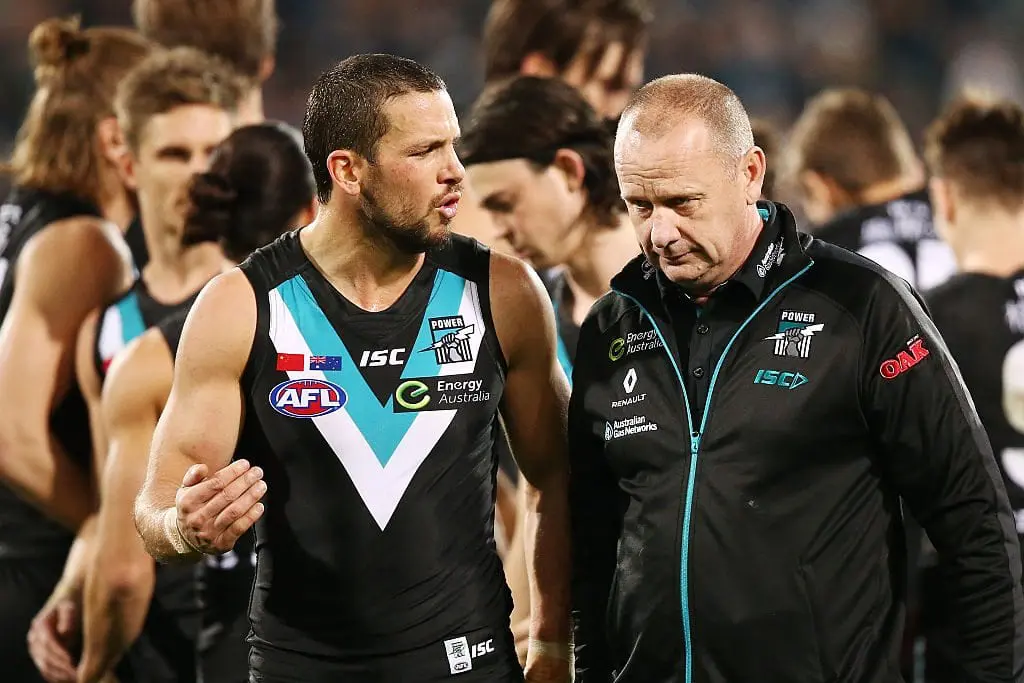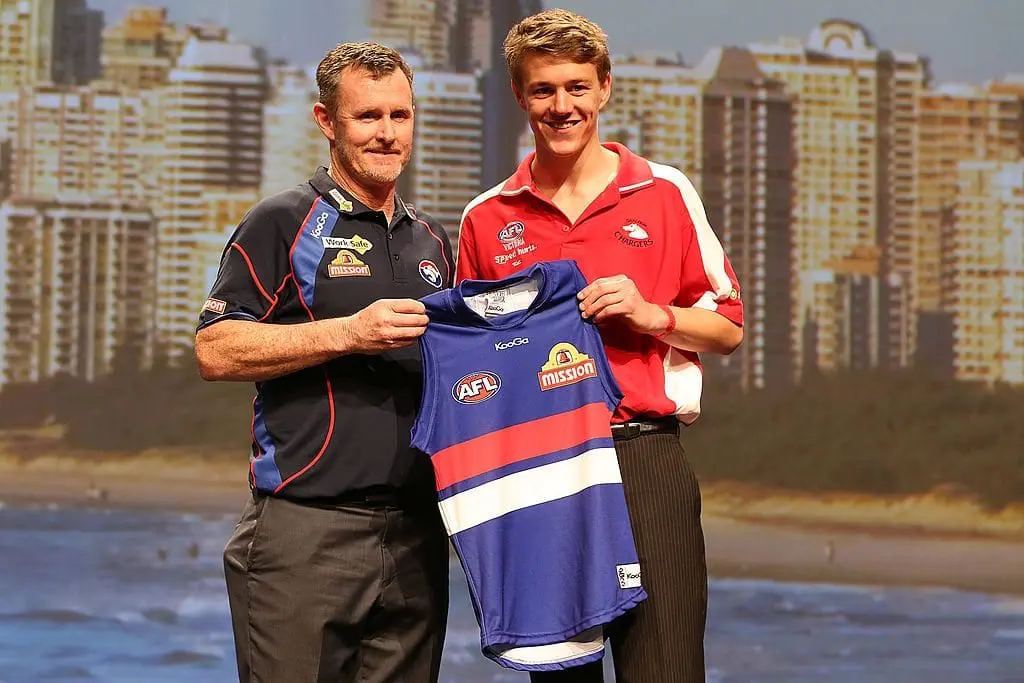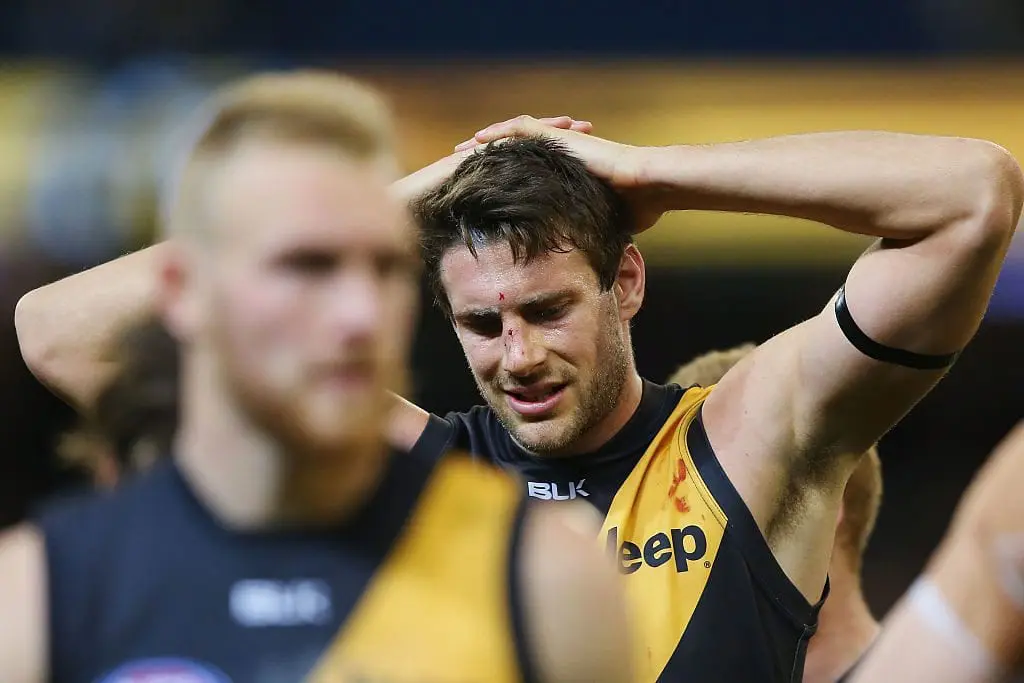In any sport, having an even league makes the game unpredictable. It brings a level of intrigue that most fans desire.
The AFL is no exception.
For a long time, predictability within the competition during the 1990s and 2000s was evident, with West Coast, Geelong, North Melbourne, Essendon and Carlton ruling the early era of the newly formed AFL.
The early 2000s was dominated by Brisbane, Port Adelaide and Essendon, and then Geelong would take over as the most dominant outfit in the late 2000s.
The first half of the 2010s continued the predictability amongst the elite sides, including Hawthorn, Geelong, Collingwood, and Sydney before Richmond.
But there had to be a changing of the guard, with struggling sides in recent seasons all of a sudden bolting into the premiership conversation.
Since the 2011 season, an average of 2.75 teams who didn't make finals the previous year made finals the following campaign. In eight of those seasons, three have leapt from non-finalists to finalists, barring season 2021 when four sides - Melbourne, Sydney, GWS, and Essendon made the leap.
Among the first sides to resurrect themselves to the September action would be Port Adelaide.
In six miserable seasons from 2007 to 2012, the Power experienced the lowest of lows, winning five games or less in seasons 2011 and 2012. Adding to the misery is the fact the club went through a financial crisis that saw them $3 million in debt, along with record-low attendances and a cascading decline in memberships.
Changes within a club often concur with the league handing out compensation picks to struggling clubs, stockpiling promising young talent or appointing the right coach to reverse the woes.
In Port's case, a promising group of young players, including draftee Ollie Wines, Justin Westhoff, Brad Ebert, Robbie Gray, Chad Wingard, Matthew Lobbe, Tom Jonas, and Jasper Pittard set the foundations for a turnaround within the four walls at Alberton.
Keeping Travis Boak galvanised the team's spirits, despite being heavily pursued by Geelong to return home. Recruiting Ken Hinkley as their next coach and bringing on board David Koch as chairman helped lay the groundwork for finals success.

Within a span of 12 months, Port Adelaide had gone from being on the brink of being lost in the AFL to a seventh-place finish in 2013.
It was a complete 360 turnaround, with the side registering 12 wins that season after just five wins in 2012. The Power registered a percentage of 102.4% - up an astonishing 23.5% from the previous campaign. It is the first time since their last grand final appearance in 2007 Port had a percentage of 100 or greater.
A team similar to the Power after three straight top-four finishes from 2008 to 2010 and with no illusive silverware was the Western Bulldogs. After a disappointing 2011 campaign, failing to yield the prospects of a fourth straight top-four finish, the Bulldogs went through one of the club's worst periods financially.
A crisis that saw the club left with an excess of $10 million in debt in 2012.
The circulating debt, combined with the recent retirements of club legend Brad Johnson and Barry Hall, and the sacking of coach Rodney Eade, left a proud football club languishing near the bottom of the ladder for the next three seasons (2012-2014). Through one of the leanest periods, the Bulldogs stockpiled on young players, who ultimately lead the Bulldogs to premiership glory.
In 2012, the Bulldogs drafted Jake Stringer and Lachie Hunter (both players no longer at the club) and Jack Macrae, who has established himself as a premium ball magnet. The following draft was when the club struck gold, drafting the elegant Marcus Bontempelli with the club's first selection at fourth overall. In 2014, the Bulldogs struck again, picking up Bailey Dale, Toby McLean, and Caleb Daniel - with Dale and Daniel being integral pieces in the club's ascent from the doldrums.

The lowest moment at Whitten Oval came when club captain Ryan Griffen requested a trade to GWS and coach Brendan McCartney resigned.
Seasons 2012 to 2014 saw the Bulldogs finish 15th, 15th and 14th respectively - only winning 20 of 66 games during this period.
Taking a leaf from Port Adelaide, the Bulldogs appointed Luke Beveridge on November 14, 2014, to lead the reins.
He immediately swung the club's prospects in 2015, doubling their win tally from seven to fourteen, in the process of playing finals for the first time in five years.
Ultimately in 2016, the Western Bulldogs ended their 62-year premiership drought after finishing the home and away season in seventh place.
Amid a time when the league looked for equalisation, clubs were beginning to bounce back into the top eight with ease.
A club that joined Port Adelaide and the Western Bulldogs in the bottom half of the competition during that period was Richmond - a once almighty club that had completely lost its identity.
Despite three consecutive finals appearances from 2013 to 2015, 2016 proved to be a rock-bottom moment at Punt Road.
After registering fifteen wins in 2013, twelve in 2014, and fifteen in 2015, the Tigers stumbled to only eight wins and a limp percentage of 79.5.
But the fortunes at Tigerland changed in 2017, going all the way to end a 37-year premiership drought. When you look at Richmond to the Western Bulldogs, there is a difference, particularly in the playing group. The Tigers' main core of Trent Cotchin, Dustin Martin, Alex Rance, Dylan Grimes, Jack Riewoldt, Shaun Grigg, Shane Edwards and Bachar Houli had been together for over five seasons, whereas the Bulldogs' young playing group were only in its second season together.

Brisbane is another side that had been in the finals-less wilderness for most of the 2010s, finishing bottom four in seven of the nine seasons, only winning 55 of 198 matches (27.8%).
Their rise was remarkable, climbing from fifteenth in 2018 to second in 2019 - ending the club's decade-long finals drought. Their achievement among only sevens occasions in the last 24 years that a side has catapulted from a bottom-four finish to a top-four finish.
After the downward trade for two-time Coleman medallist Brendan Fevola and the infamous exodus of the 'go-home' five at the end of season 2013, the Lions have steadily built a contending list behind efficient drafting and recruitment.
2014 would see the club secure eventual co-captain Harris Andrews in the draft, before the next three off-seasons would see the Lions add Eric Hipwood, Hugh McCluggage, Jarrod Berry, Oscar McInerney, Cameron Rayner, Zac Bailey, Brandon Starcevich, and Jack Payne through separate draft windows. All have established themselves in Brisbane's best 22.
Lions List Manager Dom Ambrogio was the catalyst to why the club has become a premiership contender, recruiting the likes of four-time premiership player Luke Hodge, Charlie Cameron, Lachie Neale, Lincoln McCarthy, Marcus Adams and Joe Daniher, as well as Josh Dunkley in last year's trade period.
Since the 2010 season, the ladder has steadily become more even, with seasons 2017, 2018, and 2019 being the closest.
In 2017, Melbourne narrowly missed finals by 0.5% after losing to Collingwood, and West Coast beat Adelaide by more than 20 points to leapfrog them on percentage. Season 2018 saw North Melbourne, Port Adelaide, Essendon and Adelaide miss out despite winning twelve games, with Geelong registering 13 wins, including triple-digit hidings over Fremantle and Gold Coast in the final two rounds to up their percentage from 117.2% to 131.6%.
In season 2019, Hawthorn and Port Adelaide narrowly missed finals despite having a superior percentage to the eighth-place Essendon. However, their hopes ended with the Western Bulldogs winning their last three home and away games to play finals, including a 104-point demolition of Essendon, significantly boosting their percentage from 95.8% after Round 20 to 107.2% at season's end.
With the 2023 season past the midway point, the ladder is more intriguing than ever, with only a game separating third-placed Melbourne from sixth-placed Essendon. A game separates fourth-placed Brisbane from the eighth-placed Western Bulldogs, and a solitary win separates seventh-placed Adelaide from eleventh-placed Gold Coast.
The even playing field amongst teams is greater than ever before, resulting in a fairer competition for all 18 teams.






